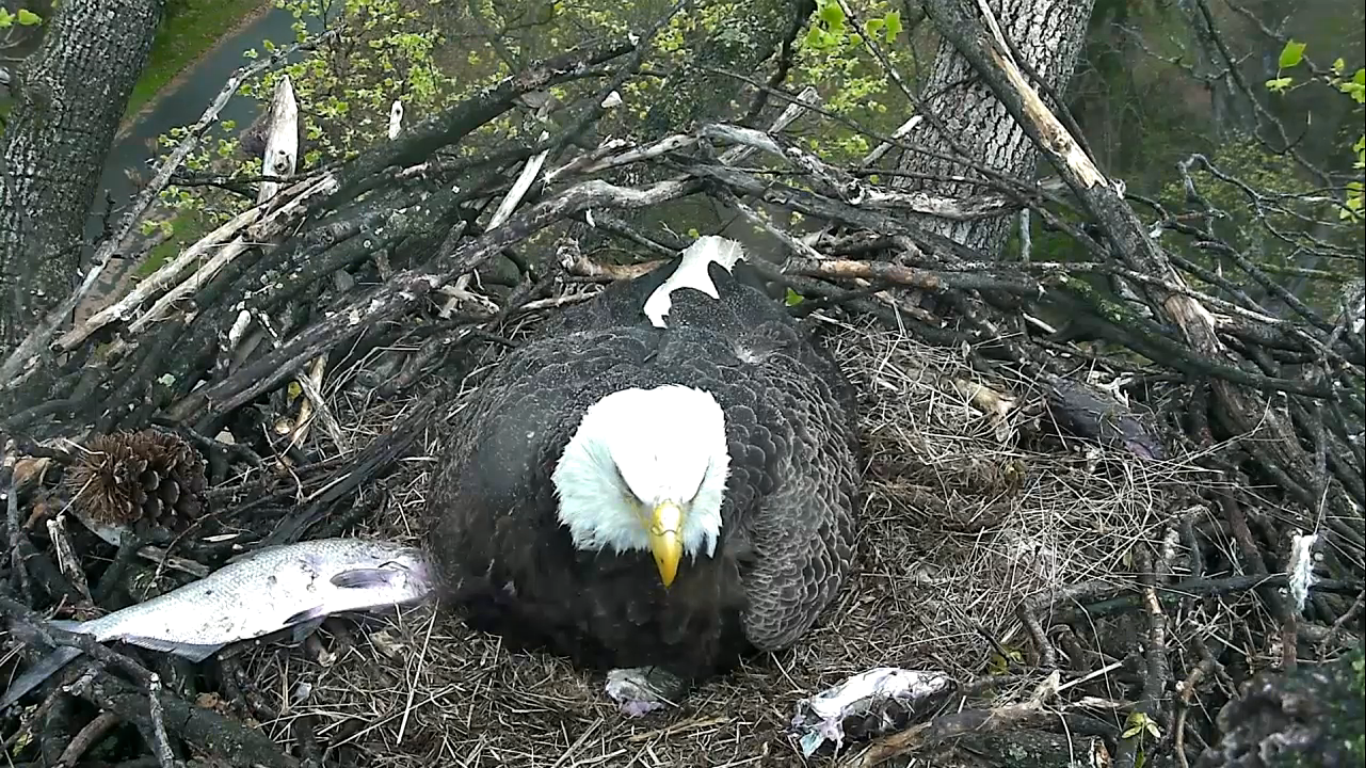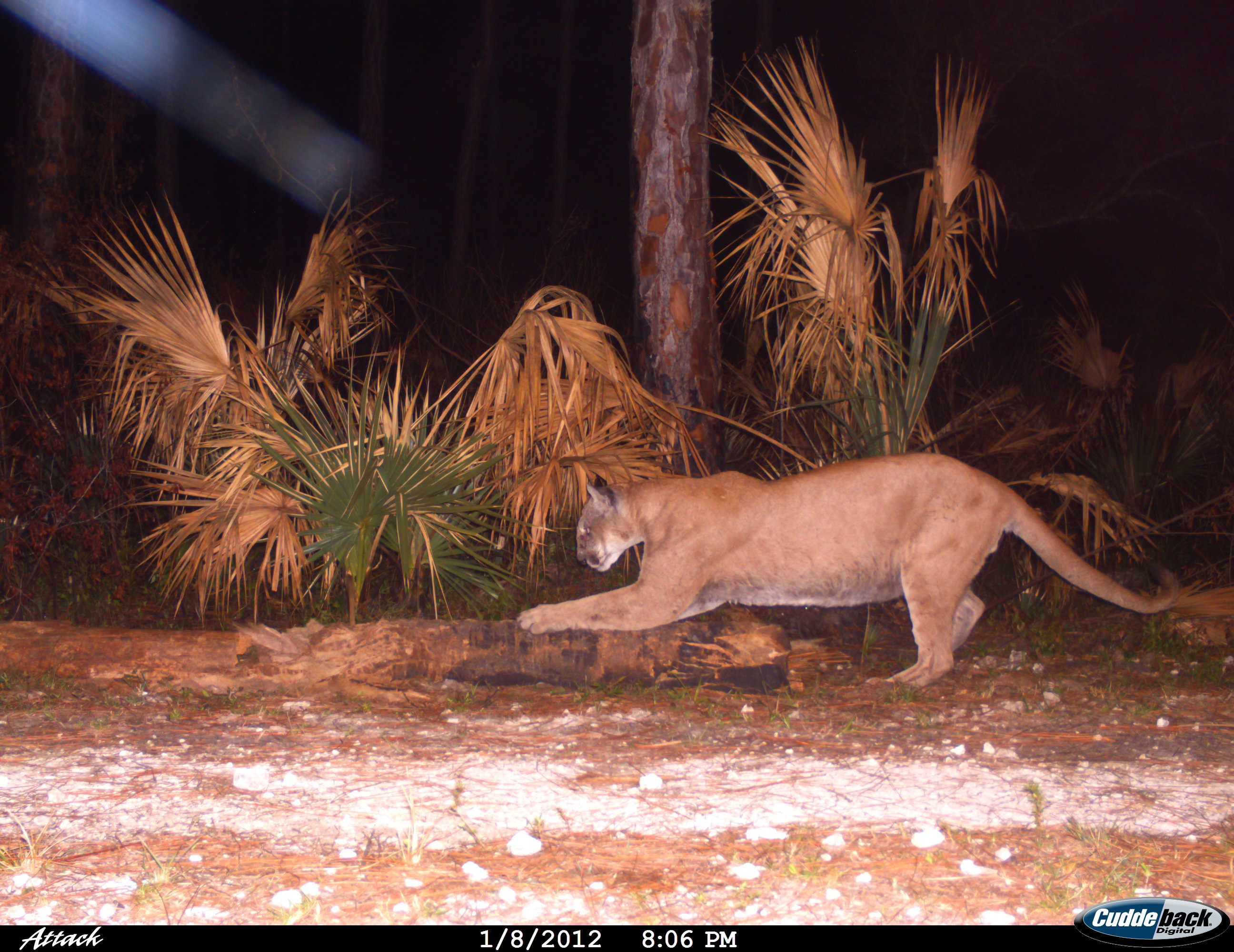The Surprisingly Long History of Animal Cams
The internet is currently obsessed with an eagle’s nest in D.C. But where did animal cams come from?

First Lady, one of the bald eagles featured on the AEF DC Eagle Cam, hangs out with her collection of fish this morning. (Photo: © 2016 American Eagle Foundation)
Here’s an uncontroversial statement: humans love watching animals.
This Friday morning, for instance, marked the culmination of a week of excitement for animal lovers. At around 8:20 a.m., the first of two bald eaglets hatched live on The American Eagle Foundation’s Bald Eagle Nest Cam. It’s the latest example of a growing preoccupation for computer-bound humans around the world: watching live video streams of animals.
Animal-centric livestreams didn’t start out, though, as a public preoccuption—they are an outgrowth of remote observation techniques used by scientists for over a hundred years, with technological developments allowing footage to be shared worldwide. Their widespread popularity with the general public isn’t actually surprising, though—in fact, it may be evolutionarily hardwired.
Animal photography became popular as soon as photography was introduced in 1839, in parallel with the rise of zoos and early conservation movements in the mid-19th century. In the 20th century, one early internet pioneer was the first to harness newly-available webcam technology to bring live animal observation out of the wild and into the cubicle. Per its website, The Amazing Fishcam launched in late summer 1994, serving up continuously refreshed webcam snapshots in three different image formats. The original tank was set up in the Netscape offices by Lou Montulli, both as a hobby and as a way to test features of the Netscape web browser. The company took the original Fishcam offline in 2008, but Montulli revived the stream with a new tank housed in the offices of Zetta, Inc. There’s even a Fishcam Firefox extension so enthusiasts can easily keep an eye on the tank at all times.
Fishcam represents the Web 1.0 roots of animal livestreams, and more sophisticated descendants have proliferated exponentially as high-speed internet, streaming services, and camera technology have made sending a live feed of your puppies/pandas/octopuses/badgers/sea otters incredibly simple and inexpensive. For zoos, many of which operate multiple animal-specific livestreams, the benefits are obvious: globally accessible streams mean international publicity for the zoos and their missions, which could translate into in-person ticket sales, donations, and memberships. The practice provides similar benefits to conservation organizations like The American Eagle Foundation and agencies like the National Parks Service.
But unmanned cameras focused on animals play an important role in research as well.
A century before Lou Montulli trained a webcam on the Netscape office aquarium, photographer George Shiras pioneered the use of camera traps—using a trip-wire to trigger a camera, allowing an animal to “photograph themselves.” For years, camera trapping has been considered a cost-effective and less-disruptive alternative to live human observation, but the results were a mixed bag: photos could be blurry or distorted and motion sensors could be triggered by falling branches, rain, or other non-animal activity. Despite the limitations, Thomas Kucera and Reginald Barrett’s “A History of Camera Trapping” explains that remote observation enabled by camera traps plays a crucial role in a variety of scientific activities, from discovering new species, to tracking endangered populations, to learning about animal behavior.
Now, the advent of DSLR cameras and infrared sensors has drastically upgraded the output of camera traps, resulting in beautiful high-resolution images and videos, which scientists and their sponsoring organizations can use to draw attention to research and conservation efforts while fulfilling the public’s need for up-close-and-personal footage of wild animals.
For example, a 2015 Gizmodo article highlighted the beautiful images gathered by photographer Jeff Cremer in the Peruvian Amazon thanks to these technological advancements. As Gizmodo points out, camera traps are now producing cover-photo-quality images such as the famous photo of LA mountain lion P-22 stalking past the Hollywood sign.

A Florida panther is captured using as tree as a scratching post. (Photo: USFWS/CC BY-2.0)
But why is the unedited, narration-free footage so popular? In an essay for Aeon, biologist David Barash suggests a potential evolutionary underpinning to our penchant for animal observation. Beyond the simple fact that we likely feel a primordial kinship with other animal species, Barash points out that “our well-being—survival, even—depended on relationships to other animals, many of which were predators, with us as their prey.” Ancient humans who remained keenly aware of potential predator animals’ behaviors and presence would hold a “potent selective advantage.”
Similarly, observation of prey held benefits as well. “Careful animal-watching would have thus been doubly rewarded: not only rendering us less liable to end up as prey but also more likely to feed successfully on others,” Barash writes.
This weekend, American Eagle Foundation staff and eagle fans worldwide are eagerly monitoring the Eagle Nest Cam for signs of Egg #2’s hatching. Whether or not the eagle-watchers are driven by some long-ingrained evolutionary urge, the immediate motivation is clear: seeing these amazing animals’ lives up-close is really awesome.







Follow us on Twitter to get the latest on the world's hidden wonders.
Like us on Facebook to get the latest on the world's hidden wonders.
Follow us on Twitter Like us on Facebook